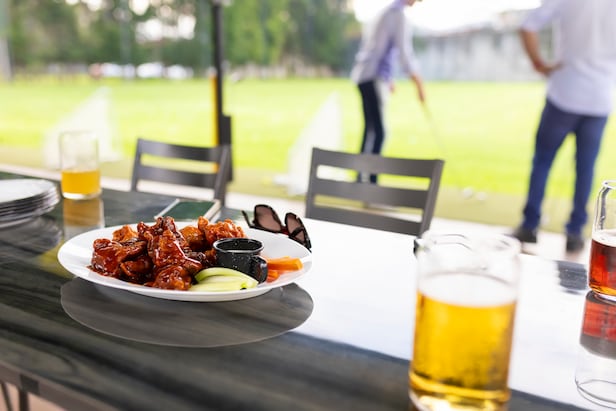Rules: Shifting Sands – Australian Golf Digest

- by Admin
- August 28, 2024

My ball is in a bunker again. What are my options?
Bunkers are employed by course designers to test our ability to play a ball from the sand. This is why the rules put in place some restrictions on touching the sand before the stroke is made.
While your ball may be sitting in the middle of the bunker, there are other situations where it may not be obvious that it is in the bunker, as your ball may be in the face (e.g. in soil) or nestled in grass near the edge of a bunker.
The test as to whether your ball is in a bunker is generally whether or not it is touching sand. A ball is in a bunker when any part of the ball touches sand on the ground inside the edge of the bunker, or it is inside the edge of the bunker and rests on ground where sand normally would be, such as where sand has been washed or blown away.
Most regular golfers are familiar with the restrictions placed on us when a ball is in a bunker. Before making a stroke at a ball in a bunker, you must not deliberately touch sand in the bunker with a hand, club, rake or other object to test the condition of the sand to learn information for the next stroke. This would include sticking your finger in the sand to determine its depth or consistency.
You also must not touch sand in the bunker with a club in making a practice swing, or in making the backswing for a stroke. Nor are you permitted to touch the sand in the area right in front of or right behind the ball. While not encouraged due to its potential impact on pace of play, these restrictions do not prohibit you from taking practice swings in another bunker and touching the sand in the process.
Of course, most of us play shots from the bunker to varying degrees of success, however there are times when a shot is impractical. This includes in pot bunkers when the ball is resting up against a steep face and even playing backwards seems impossible.
So if you find yourself unable to play your next stroke from the bunker, you can proceed under the unplayable ball rule. You have four options for a ball in a bunker, with all but one of the options costing you one penalty stroke.
You can always proceed under stroke and distance, i.e. you may play the original ball or another ball from where the previous stroke was made. If the stroke that was made that put your ball in the bunker was made from outside the bunker, e.g. the fairway, you can take relief at that spot and therefore drop outside the bunker for only one penalty stroke.
For two of your relief options, you must drop within the bunker. These are lateral relief and back on the line (BOTL) relief. Lateral relief allows you to drop a ball within a two-club-length relief area, no nearer the hole than where the unplayable ball was sitting. BOTL allows you to drop a ball on a line keeping the spot of the original ball between the hole and the spot where the ball is dropped, with no limit as to how far back the ball may be dropped, within the bunker.
The fourth option, for two penalty strokes, allows you to take BOTL relief outside the bunker.
While we try to avoid them, remember you do have the unplayable ball option in a bunker, should you need it.
Stuart McPhee is a referee for the PGA Tour of Australasia and co-host of the No.1 podcast in the world dedicated solely to discussing the Rules of Golf: The Golf Rules Questions Podcast.
Getty images: richard heathcote/R&A
The Latest News
-
January 8, 2025South Australia leads the nation with a surge in job vacancies, outperforming other states
-
January 8, 2025Cleveland RTZ wedges: What you need to know – Australian Golf Digest
-
January 8, 2025New data shows golfers might be ditching this halfway-house staple – Australian Golf Digest
-
January 8, 2025Nurses, delivery drivers to be among Australia’s most in-demand jobs by 2030
-
January 8, 2025Demon beats world No.3 in pre-Open warning





